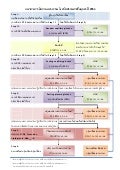
In addition, women under the age of 55 must have a documented serum follicle stimulating hormone (FSH) level less than 40 mIU/mL. Menopause is defined clinically as 12 months of amenorrhea in a woman over 45 in the absence of other biological or physiological causes. "Women of childbearing potential (WOCBP)" is defined as any female who has experienced menarche and who has not undergone surgical sterilization (hysterectomy or bilateral oophorectomy) or who is not postmenopausal. Women of childbearing potential must have a negative serum or urine pregnancy test (minimum sensitivity 25 IU/L or equivalent units of HCG) within 72 hours prior to the start of T-DM1. Ability to understand and the willingness to sign a written informed consent document. Assessment of cardiac function either by an echocardiogram or a multi-gated acquisition (MUGA) scan prior to the therapy initiation, with a baseline left systolic ventricular ejection fraction (LVEF) ≥ 50% within 1 month prior to study registration.

HER2 positive disease as defined by any of the following: - Tumor HER2 expression staining intensity of 2 or 3+ by IHC (from either a preoperative biopsy or resection specimen at the time of oncologic surgery) - HER2 amplification as determined by FISH (HER2/CEP 17 ratio greater than or equal to 2.0 or HER2 mean copy number greater than or equal to 4.0) - HER2 or ERBB2 mutated on tumor genomic sequencing assay (see Section 9.1 for permitted HER2 mutations) - Age 18 years or older - ECOG performance status ≤ 1 (Karnofsky ≥ 60%, see Appendix A) - Participant must have normal organ and marrow function as defined below within 14 days prior to study registration: - leukocytes ≥ 3,000/mcL - absolute neutrophil count ≥ 1,000/mcL - hemoglobin ≥ 9.0 g/dL - platelets ≥ 100,000/mcL - total bilirubin ≤ 2.0 g/dL - AST(SGOT)/ALT(SGPT) ≤ 2.5× institutional upper limit of normal - creatinine within normal institutional limits OR - creatinine clearance ≥50 mL/min/1.73 m2 for participants with creatinine levels above institutional normal - Serum calcium (corrected for albumin value), magnesium, and potassium levels within normal limits per institutional standards. Willing to provide tissue from a diagnostic biopsy or at the time of cancer resection, and blood samples before, during, and after treatment. Inclusion Criteria: - Subject must have histologically or cytologically confirmed, resectable stage II (with positive margins), III, IVA, or IVB locoregionally advanced salivary gland carcinoma (including any histologic subtype), as defined by 2017 American Joint Committee on Cancer (AJCC), 8th edition. Standard of Care + T-DM1 in HER2-Positive Salivary Gland Cancer Intravenous infusion ever 21 days (3weeks) for 1 year (52 weeks)
T dm1 clinical trials registration#
Time from study registration to the earlier of the first occurrence of distant or metastatic disease, or death due to any cause assessed up to 36 months Time from study registration to death due to any cause, or censored at date last known alive assessed up to 36 monthsĭistant metastatic-free survival (DMFS) Rate Time from the date of study registration to first invasive local, regional, distant recurrence, or death due to any cause assessed up to 36 months Genentech is supporting this research study by providing the research study drug, T-DM1. It is expected that about 55 people will take part in this research study. This research study involves radiation, chemotherapy, and targeted therapy given after surgery for up to 1-year, and participants will be followed for 3 years. The research study procedures include: screening for eligibility and study treatment including evaluations and follow up visits. Food and Drug Administration (FDA) has not approved T-DM1 for HER2-positive salivary gland cancer but it has been approved for other uses (for breast cancers that express HER2 protein).

This allows the use of a targeted treatment along with chemoradiation to treat HER-2 expressing salivary cancers. T-DM1 then binds cancer cells that express HER-2 and is taken up into the cell to allow DM1 to kill cancer cells in a more targeted way.

The drug is a HER-2 antibody that is bound to a chemotherapy agent (DM1) and delivered intravenously. This research study is: - Studying the use of T-DM1 in combination with radiation and chemotherapy and the use of maintenance T-DM1 alone for up to a year after surgery - Evaluating the effectiveness, safety, and toxicity of T-DM1 T-DM1 is a specialized antibody targeting HER-2 (a protein that is expressed in some breast and salivary gland cancers). This is a phase II, open-label, non-randomized, multi-institutional study investigating postoperative or adjuvant human epidermal growth factor receptor (HER2)-directed therapy with adjuvant ado-trastuzumab emtansine (T-DM1) in HER2-positive salivary gland carcinomas (SGC).


 0 kommentar(er)
0 kommentar(er)
